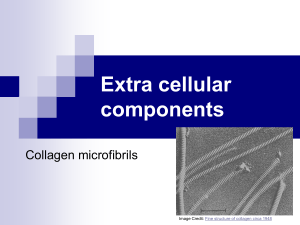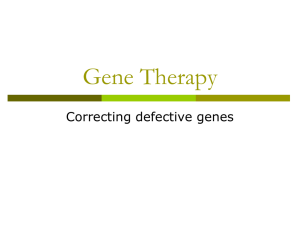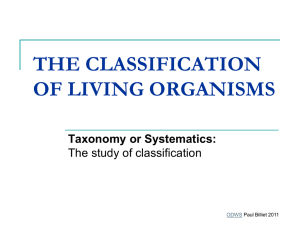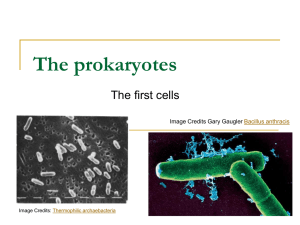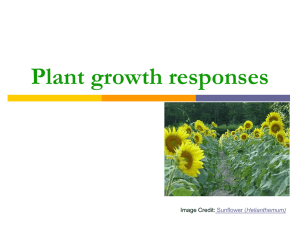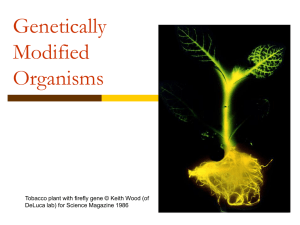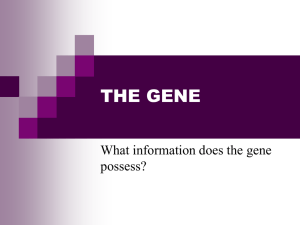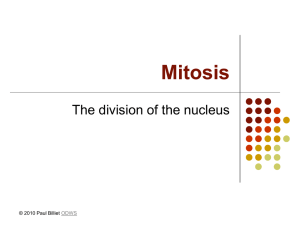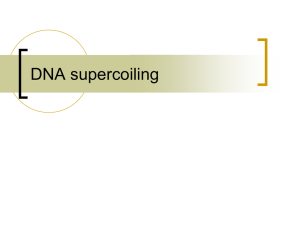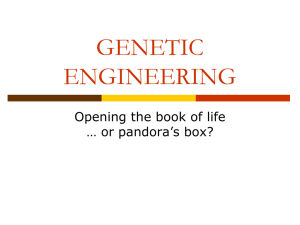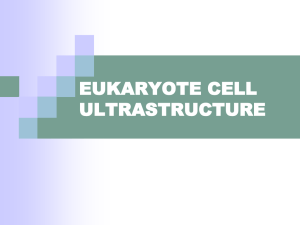Powerpoint Presentation: Stem Cells
advertisement
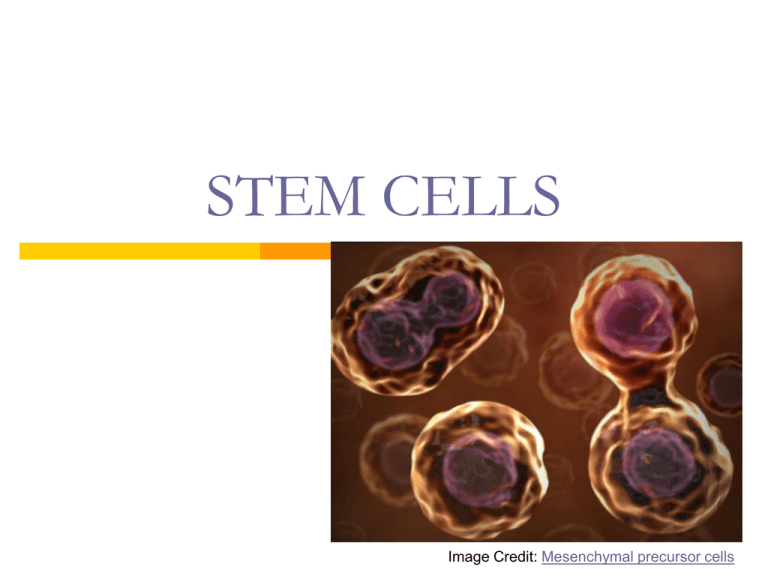
STEM CELLS Image Credit: Mesenchymal precursor cells Division and differentiation All cells reproduce by dividing Cells produced by mitosis are clones This is how unicellular organisms reproduce asexually Multicellular organisms are a bit different Released into the Public Domain by Jrockley When the cells of an embryo divides, initially they are all the same Later the cells start to differentiate (specialise) Image Credit: www.scienceclarified.com © 2010 Paul Billiet ODWS Differentiation and gene expression All the somatic cells (not gametes) of a multicellular organism contain the same genetic information But cells in different tissues perform different functions Cells in different tissues have quite different forms Therefore, some genes are expressed in a cell and not others © 2010 Paul Billiet ODWS Hox genes Genes that control development are a group called Hox genes Surprisingly similar for all animals The sequence in which they express seems to create the differences in development Image Credit: Hox genes of fruit fly and mouse © 2010 Paul Billiet ODWS What causes differentiation? Cells differentiate according to their position in an embryo Transferring cells from one place to another illustrates this The signals are called growth factors These factors are released by zones of cells called organisers The surrounding cells develop along a determined route Zebra fish embryology © 2010 Paul Billiet ODWS Early experiments Displace organiser cells and the embryo will develop an organ in a different place from usual Or if a second organiser is added an additional organ will develop © 2010 Paul Billiet ODWS Copyright© 2006 Nature Publishing Group Nature Reviews Molecular Cell Biology Totipotent and pluripotent cells In simple animals (e.g. sponges) the cells retain their capacity to regenerate into whole new sponge Totipotent More complex animals lose this capacity Cells of the early embryo are capable of turning into any type of cell (pluripotent) Differentiated cells may not be able to do this Image Credit: Sea Sponge © 2010 Paul Billiet ODWS Stem cells Cells that can develop into any other cell are called stem cells A few still exist in the body of an adult E.g. bone marrow has blood stem cells E.g. umbilical cords have stem cells © 2010 Paul Billiet ODWS Bone marrow stem cells © David Darling Image Credit: Blood stem cell differentiation Making stem cells Stem cells could be used to replace tissues that are damaged or diseased E.g. cardiac muscle will not divide once it has differentiated Stem cells stimulated to grow into cardiac cells could replace the need for heart transplants The problem of tissue typing and tissue rejection still remains Implanted tissue could become cancerous © 2010 Paul Billiet ODWS Cloned stem cells If stem cells can be cloned from the cells of a patient they can be used to generated genetically identical tissues Therapeutic cloning Mammalian cells need to be set back to the beginning of the cell cycle (G0) © 2010 Paul Billiet ODWS Somatic cell nuclear transfer SCNT Made famous by Dolly the sheep Oocytes (unfertilised egg cells) harvested Nuclei removed Somatic cells from animal to be cloned fused with enucleate oocyte Electric shock sets the cell cycle to G0 Nuclear genome cloned but… Mitchondrial genome comes from animal which donated the oocyte © 2010 Paul Billiet ODWS Image Credit: Removing the nucleus from an oocyte Problems for SCNT in therapeutic cloning Human oocytes are few and difficult to obtain A lot of oocytes needed to generate successful cell lines (304 oocytes from 14 macaques to produce 2 cell lines) Ethical problem of embryo destruction Early embryo cells are harvested to generate cloned tissues for transplants/grafts © 2010 Paul Billiet ODWS The answers? Fuse somatic cell with enucleated oocyte of another species of animal Umbilical cord stem cells Induced pluripotent stem cells (iPS) (Genetically modified somatic cells reprogrammed back to its undifferentiated state) © 2010 Paul Billiet ODWS Image Credit: Umbilical cord
